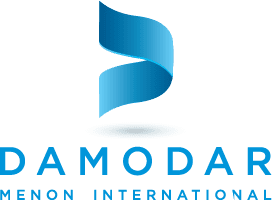Viscose fiber, also commonly known as rayon, is a type of regenerated cellulose fiber that is produced from natural materials, primarily wood pulp. It is considered a semi-synthetic fiber because it undergoes a chemical process to transform the raw material into a usable textile material. Viscose is known for its smooth and silky texture, as well as its ability to imitate the feel and drape of more expensive natural fibers like silk. In India, there are several prominent viscose yarn manufacturers that contribute significantly to the textile industry’s production and innovation. These viscose yarn manufacturers in India play a vital role in supplying high-quality viscose yarn to both domestic and international markets.
Viscose, also known as viscose rayon, is a synthetic fiber crafted from 100% regenerated cellulose. It was initially uncovered in 1891 and entered commercial production in 1905, thanks to the efforts of Courtaulds. This fiber is created using materials like cotton linters or wood pulp, often sourced from trees such as spruce and pine. Viscose rayon represents a contemporary version of one of the earliest artificial silk variants.
Viscose rayon displays certain characteristics that are important to understand. It possesses relatively low strength and tends to stretch significantly when subjected to force until it eventually breaks. When exposed to moisture, such as during washing, it can lose a considerable portion (about 30 to 50%) of its strength, thus requiring cautious laundering.
Properties of Viscose Fiber: Exploring Characteristics and Impact through Yarn Manufacturers in India
Absorbency: Viscose stands out as one of the most absorbent fibers, even more so than cotton or linen. However, it experiences a reduction of 40% to 70% in strength when wet.
Drape: Viscose boasts commendable draping characteristics, due to the weightiness of its fibers.
Conductivity: With a high level of conductivity, viscose remains pleasantly cool in warmer climates. The spinning process can lend it a napped texture that traps air, making it suitable for wearing during colder months.
Resistance: Viscose demonstrates notable resistance to sunlight, particularly colored variants that withstand strong sunlight better than silk. Nevertheless, prolonged exposure to sunlight can cause white viscose to yellow and degrade.
Sustainability: Viscose can be considered sustainable as it originates from wood pulp. However, its production process involves the use of environmentally harmful chemicals, and the proper disposal of waste byproducts is crucial.
The Production Process of Viscose Fiber:
1. Cellulose Extraction: Obtaining cellulose from wood pulp, primarily sourced from trees like spruce and pine.
2. Alkali Treatment: Treat cellulose with sodium hydroxide to create a viscous solution.
3. Aging: Allowing the viscous solution to age, enhances desired properties.
4. Xanthation: Treating aged solution with carbon disulfide to form cellulose xanthate.
5. Viscose Formation: Dissolving cellulose xanthate in sodium hydroxide to produce a viscose solution.
6. Spinneret Extrusion: Extruding viscose solution through spinnerets into a sulfuric acid bath, forming filaments.
7. Ripening: Washing and ripening filaments to develop properties.
8. Neutralization and Washing: Neutralizing filaments and thorough washing to remove chemicals.
9. Drying and Cutting: Drying filaments, cutting into staple fibers, and packaging.
10. Laundering and Finishing: Preparing viscose fibers for different applications through treatments.
Uses of Viscose Fiber:
1. Apparel and Clothing: Viscose Fiber is a popular choice for crafting a range of clothing items. Its smooth texture and ability to mimic the luxurious feel of silk make it ideal for creating dresses, blouses, shirts, and skirts. Additionally, its high absorbency allows for vibrant dyeing, resulting in colorful and eye-catching garments.
2. Blend Fabrics: Viscose Fiber is often blended with other fibers like cotton, polyester, or elastane to enhance various characteristics. These blends can offer improved durability, stretch, and shape retention.
3. Non-Woven Fabrics: Viscose is employed in producing non-woven fabrics used in items like wet wipes, medical supplies, and cleaning cloths due to its absorbent nature.
4. Artificial Silk and Imitation Leather: Viscose is also used in creating artificial silk fabrics, imitating the luxurious look of silk. Additionally, it can be utilized in the production of imitation leather materials.
5. Yarn Production: Viscose Fiber plays a vital role in yarn manufacturing, contributing to the creation of a variety of yarns that are subsequently used in knitting, weaving, and other textile processes.
viscose fiber, also known as rayon, is a versatile and popular semi-synthetic textile material derived from regenerated cellulose, primarily sourced from wood pulp. Despite its susceptibility to moisture and certain environmental concerns in its production process, viscose offers excellent absorbency, draping properties, and a silk-like texture. Its applications range from clothing and blend fabrics to non-woven products, artificial silk, and yarn production.
For those seeking reliable and quality yarn manufacturers in India, look no further than DMI. With over 20 years of experience in the yarn trading industry, DMI is a trusted partner for sourcing polyester, viscose, and cotton yarns worldwide. We maintain strong relationships with 500+ reputable fabric suppliers in India, specializing in premium wool, cotton, and polyester fibers. Our personalized solutions cater to diverse business needs, budgets, and locations. Contact our knowledgeable trading experts to explore the best yarn options for your requirements.
Also, if you are looking for reliable sellers to import wholesale fabric online from India, TEXchange offers complete customized solutions in an ever-evolving and diversifying international greige yarn and fabric market.
